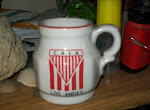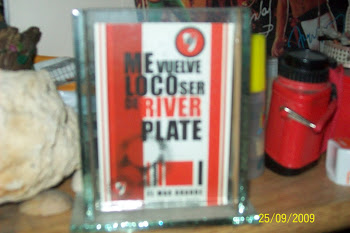¿quien fue?
Nellie Bly.
 Elizabeth Jane Cochran (Cochran's Mills, Pensilvania; Nellie nació el 5 de mayo de 1864 - Nueva York; 27 de enero de 1922) fue una predecesora del periodismo investigativo y ella fue pionera del periodismo encubierto. Fue llamada "Pink" en alusión al vestido rosado claro que usó en su bautismo. Cochran fue mejor conocida bajo su seudónimo Nellie Bly. Aparentemente después cambió su apellido a Cochrane (con una 'e' añadida).
Elizabeth Jane Cochran (Cochran's Mills, Pensilvania; Nellie nació el 5 de mayo de 1864 - Nueva York; 27 de enero de 1922) fue una predecesora del periodismo investigativo y ella fue pionera del periodismo encubierto. Fue llamada "Pink" en alusión al vestido rosado claro que usó en su bautismo. Cochran fue mejor conocida bajo su seudónimo Nellie Bly. Aparentemente después cambió su apellido a Cochrane (con una 'e' añadida). Bly escribió algunos artículos de investigación antes de ser relegada a la sección para mujeres. Abandonó el Dispatch y viajó a Nueva York, donde solicitó empleo en el periódico sensacionalista The New York World, de Joseph Pulitzer. Pulitzer la contrata, y se le asigna como primer trabajo la escritura de un artículo sobre un asilo psiquiátrico para mujeres en Blackwell's Island. Bly se internó en el asilo, exponiéndose a las horribles condiciones a las que se sometía a las pacientes. Este tipo de periodismo en encubierto eventualmente se convertiría en su estilo particular.
Bly escribió algunos artículos de investigación antes de ser relegada a la sección para mujeres. Abandonó el Dispatch y viajó a Nueva York, donde solicitó empleo en el periódico sensacionalista The New York World, de Joseph Pulitzer. Pulitzer la contrata, y se le asigna como primer trabajo la escritura de un artículo sobre un asilo psiquiátrico para mujeres en Blackwell's Island. Bly se internó en el asilo, exponiéndose a las horribles condiciones a las que se sometía a las pacientes. Este tipo de periodismo en encubierto eventualmente se convertiría en su estilo particular.
Nellie Bly, finales de la década de 1880.
En 1888 se le sugirió al World que mandara un reportero en un viaje alrededor del mundo, en referencia al libro La vuelta al mundo en ochenta días (escrito por Julio Verne). Nellie Bly fue elegida como la reportera a realizar dicha hazaña y el 14 de noviembre de 1889 partió en su viaje de 24.889 millas desde Nueva York.
"Setenta y dos días, seis horas, once minutos y catorce segundos después de su salida desde Hoboken" (el 25 de enero de 1890) Nellie regresó a Nueva York. Bly estableció un nuevo récord mundial al dar la vuelta al mundo en tan poco tiempo pero meses después, George Francis Train rompió esta nueva marca al completar dicho viaje en 62 días.
"Setenta y dos días, seis horas, once minutos y catorce segundos después de su salida desde Hoboken" (el 25 de enero de 1890) Nellie regresó a Nueva York. Bly estableció un nuevo récord mundial al dar la vuelta al mundo en tan poco tiempo pero meses después, George Francis Train rompió esta nueva marca al completar dicho viaje en 62 días.
En sus viajes alrededor del mundo visitó Inglaterra, Japón, China, Hong Kong, el hogar de Julio Verne, Brindisi, Colombo y San Francisco. Fue también la primera mujer en navegar el mundo sola, sin compañía, y protección de un hombre y llegó a inspirar a las mujeres occidentales.
Nellie Bly contrajo matrimonio con el millonario, Robert Seaman, en 1895 y al mismo tiempo se retiró del periodismo por algún tiempo. Cuando Seaman murió en 1904, Nellie tomó las riendas de sus compañías. Nellie trabajó archivando noticias una vez más y reportó los eventos de la convención de 1913 a favor del sufragio femenino. Ella también viajó a Europa durante la Primera Guerra Mundial y fungió como reportera desde el frente del este.
Elizabeth "Pink" Cochrane murió a los 57 años de neumonía.
En Brooklyn, Nueva York existe un pequeño parque de atracciones que lleva el nombre de Elizabeth y tiene como tema La vuelta al mundo en ochenta días.
fuente: http://es.wikipedia.org/wiki/Nellie_Bly
fuente: http://es.wikipedia.org/wiki/Nellie_Bly
algo de lo que dice en este enlace (en ingles): https://www.google.com/doodles/nellie-blys-151st-birthday
Animation: Katy Wu // Music: "Nellie" by Karen O
In 1880, the Pittsburgh Dispatch published an article titled "What Girls Are Good For.” In dismissive terms, the column’s author wrote that women shouldn't be allowed to work because their place was at home.
Days later, a pseudonymous rebuttal appeared in the paper. The response, by a 16-year-old girl whose real name was Elizabeth Jane Cochran, argued how important it was for women to be independent and self-reliant. Within a decade, the author of that response would become known worldwide as Nellie Bly: a hard-hitting young journalist who went undercover at a lunatic asylum and traveled around the world in a record-breaking 72 days.
Throughout her life and career, Nellie Bly spoke up for the underprivileged, the helpless and minorities, and defied society’s expectations for women. We love her adventurous spirit, and we share her belief that women can do anything and be anything they want (we like to think if she were around today she’d be a fellow fan of trailblazing women like Ada, Anitaand Ann). So when it came time to honor Nellie with a Doodle, we wanted to make it special. Karen O of the Yeah Yeah Yeahs wrote, composed and recorded an original song about Nellie, and Katy Wu, the artist who created this doodle, created an animation set to Karen O’s music celebrating this intrepid investigative reporter.
Nellie was born on May 5, 1864 in a suburb of Pittsburgh, Pa. After her response was published in the Dispatch in 1880, the editor, George Madden, tracked her down and hired her as a reporter. At the time, women reporters commonly used pen names; hers came from a song by fellow Pittsburgher Stephen Foster. She spent several years at the paper before moving to New York for a job at New York World, which was owned by Joseph Pulitzer. In 1887, she went undercover at the Women's Lunatic Asylum on Blackwell's Island to write an exposé about the conditions there. Her resulting book, “Ten Days in a Mad-House,” made her famous.
But Nellie is best known for her trip around the world. Inspired by Phileas Fogg, the hero of Jules Verne’s novel, “Around the World in 80 Days,” Nellie set sail from New York in November 1889 determined to beat Fogg’s time. Traveling by steamships and sailboats, she sent dispatches back to her newspaper as she circled the globe. Instead of sitting idly and just observing, she was always a part of the action and conversation, despite the fact that public spaces were typically reserved for men at the time.
When creating the Doodle, we took inspiration from Karen O’s lyrics and Nellie’s journey around the globe. Throughout the video, Katy used newspaper as a unifying theme—with paper tearing, folding and crumpling as the story goes along. And though the video is mostly black and white, she added some color to represent Nellie's energy and vibrancy.
Back in the 19th century, Nellie fearlessly showed a generation of people “what girls are good for.” We’re excited to tell her story in today’s Doodle—and we hope Nellie inspires women and girls everywhere to follow in her footsteps and show the world what they can do.
Liat Ben-Rafael, Program Manager, Google Doodles

































































































































+front.jpeg)

















.jpg)












































.jpg)




.jpg)


.jpg)
































































































1 comentarios:
si en 57 años hizo todo eso , con mas años que hubiera podido llegar a hacer?
salu2 cumpli2
Publicar un comentario
si sos spamer o vas a insultar mejor andate, ademas de que el mensaje fuera de lugar sera borrado